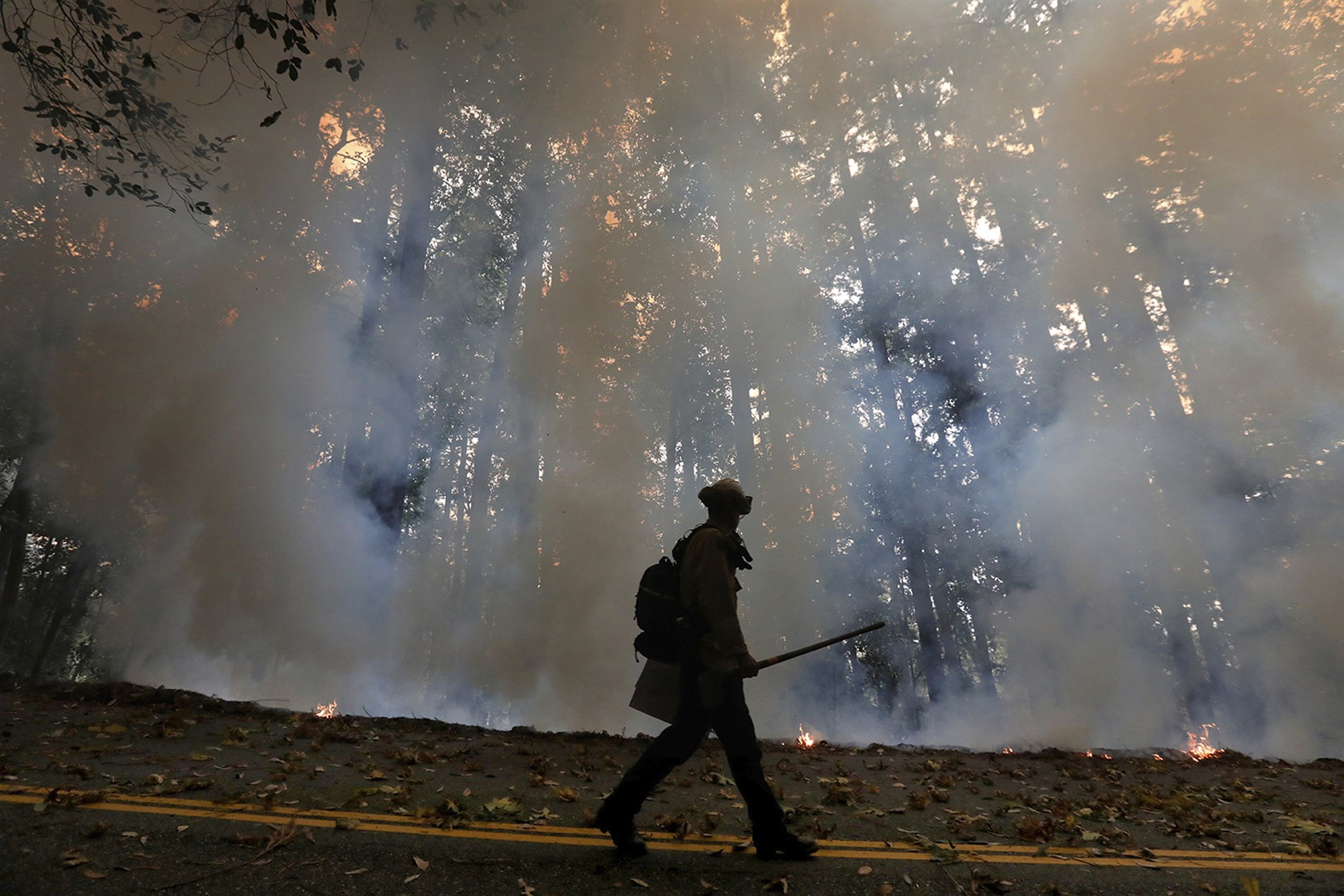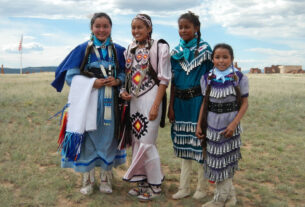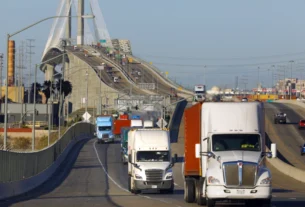
“The reality is you’re going to see positives in camp, that’s just the era we are in globally,” Oregon’s chief deputy fire marshal said.
Federal firefighter units tasked with putting out some of the nation’s biggest wildfires are grappling with the reality of a fire season coinciding with a pandemic.
As historic wildfires have spread through much of the West this summer, firefighters organized within the Department of the Interior and the Department of Agriculture’s U.S. Forest Service are testing positive for COVID-19 — having to, at times, learn on the fly how to mitigate the spread as virus spikes hit various fire camps assigned to active blazes.
Wildland firefighters are sometimes considered the last defense, called in after local resources are stretched thin. Federal crews spend the fire season crisscrossing state borders as they are sent to fight the latest burning blaze. And that constant traveling, as well as the close working proximity, have offered a challenge to COVID-19 mitigation, especially as firefighting methods like holding the line can require elbow-to-elbow teamwork.
In a normal year, the coordination between the Interior Department’s bureaus and the Forest Service, who compile the federal wildfire response, is complex. COVID-19 has added another element of complication.
Arizona’s Bush fire was one of the first major fires this season, and was one of the first to test out the dual challenge of firefighting during a pandemic. The blaze, first started by a car fire in the state’s Sonoran Desert, burned nearly 200,000 acres, ultimately becoming the fifth largest fire ever in the state.
“We kind of live for this. This is a mission of ours. You know, we become firefighters because we want to protect the land and serve the people,” said Eric Solomon, a Forest Service public affairs officer for the Tonto National Forest, where the Bush fire was. “At the beginning of this fire season, COVID was still something that we really didn’t understand. So, there was definitely an element of fear there that, ‘What happens to me if I get sick?’”
At one point, as many as 855 firefighters were assigned to fight the Bush fire. In late June, eight members of an Oregon-based Bureau of Land Management fire crew working to fight the fire tested positive for COVID-19 just days after arriving at the camp. They had to be quarantined at hotels with nine others that they came in contact with. The cluster of cases was considered to possibly be one of the largest COVID-19 exposures to firefighters so far this year, according to a report by John Szulc, fire risk management officer in the Pacific Northwest/Alaska region.
The incident was just one of many virus exposures that have so far taken place this fire season, with agency coordinators anticipating the number to grow. Fear of spread is especially heightened as experts warn breathing in wildfire smoke could worsen the symptoms of COVID-19.
“COVID has added another logistical layer on top of an already complicated logistical situation where you are providing for personnel safety, saving homes, and now providing for reducing spread amongst hundreds or thousands of firefighters on one incident,” a spokesperson for the National Interagency Fire Center, which organizes national fire response across the agencies, said.
State and federal fire crews have had months between the onset of the pandemic and the anticipated fire season to prepare for the collision of the two, and many lead with the working assumption that crews would inevitably test positive.
“The reality is you’re going to see positives in camp, that’s just the era we are in globally,” Mariana Ruiz-Temple, Oregon’s chief deputy fire marshal, said. “Knowing that and not being afraid of that, is what’s important.”
A joint study published this month by the Forest Service’s Rocky Mountain Research Station and the Colorado State University that modeled potential COVID-19 spread among fire camps, found that in the worst case scenario, more than 5 percent of all fire crew would be infected on the job, with it proving fatal for 1 percent.
The number of positive COVID-19 cases in federal firefighting crews is not being tracked on the national level. Instead, individual bureaus are responsible for counting and publicly sharing that data.
To date, 45 Bureau of Land Management firefighters, 122 Forest Service firefighters and one U.S. Fish and Wildlife Service firefighter have tested positive for the virus, according to each agency respectively. A seasonal firefighter working for the Bureau of Land Management in Fairbanks, Alaska, died Aug. 13 shortly after testing positive for COVID-19 while on the job. So far, 54 firefighters within the Bureau of Indian Affairs have tested positive for COVID-19, a source told NBC News, and the bureau confirmed five agency firefighters are currently positive with the virus. The National Park Service would not provide the total number of its fire staff who had tested positive, despite multiple requests.
To counter the virus’s spread, crews have changed many aspects of their on-the-ground fire response including organizing smaller sleeping camps, suspending buffet lines, adopting Zoom-based morning check-ins and wearing masks during transport. But the adaptation has still offered challenges.
In one June incident, several firefighters across three states tested positive for the virus after a member of a fire helicopter, or helitack, team contracted COVID-19. The person on the helitack team for the Humboldt-Toiyabe National Forest started experiencing fever and chills while fighting the breakout of the Murphy fire in Nevada. That crew member self-isolated, but none of the 13 other members of the crew went for testing or were isolated, according to a report by the safety officer for Humboldt-Toiyabe.
“This was the third helitack crew member to be tested in the last couple weeks. Therefore, the apparent regularity of this process may have introduced a relaxed mood within the crew, not to mention the two previous negative test results,” the author of the report wrote.
Days later, those crew members were assigned to a fire at Colorado’s San Juan National Forest. One crew member and another dispatcher later tested positive, which ultimately led to the suspension of helitack operations for 14 days. Two Forest Service firefighters from Georgia’s Chattahoochee-Oconee National Forest who had been detailed to the Humboldt-Toiyabe National Forest, later also came down with COVID-19.
“Managing COVID-19 in the wildfire suppression environment is an exercise in trade-offs,” the safety officer wrote. “The threat of community impact from a wildfire has been deemed more significant than the threat of community spread from a potential exposure to COVID-19. What size of outbreak or degree of hospitalization will it take to change this dynamic? It’s not a matter of ‘if it will happen.’ It’s a matter of ‘when.’”
Solomon is more positive about the learning curve firefighters have had to deal with, when considering the balance of doing their jobs and being safe. He said wildland crews this year have largely been able to quickly learn how to best mitigate risks.
“I think we’re just adaptable. This is different. People just realized we just needed to do things a little differently this year,” he said. ”It’s just a new normal for us now.”



